A complex aesthetic surgery to change the structure of the nose is called rhinoplasty. The procedure involves tissue and bone, due to which the process is considered quite laborious and difficult. Because of this, the plastic surgeon must be highly qualified.
What is Rhinoplasty?
A surgical procedure called rhinoplasty corrects congenital and acquired defects in the nose and, if necessary, builds up the missing areas. During the intervention, the doctor corrects the shape of the organ by invading its osteochondral system.
Types of rhinoplasty
There are several options for rhinoplasty, which depend on the methods of nasal access.
Closed
In this operation, the nose is cut from the inside, as a result of which the resulting scars become invisible. Closed rhinoplasty does not damage the arteries that feed the tip of the respiratory organ. Thanks to this, the nose heals and regenerates faster. But besides these advantages, there are also disadvantages.
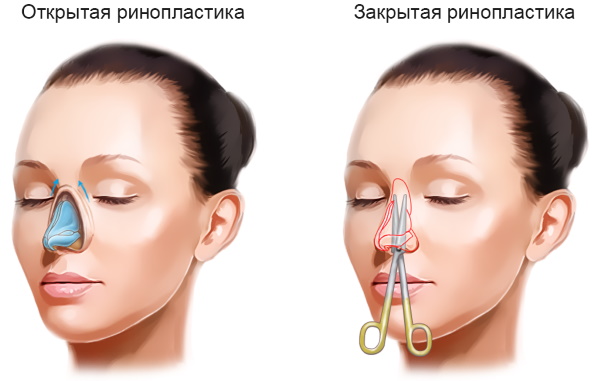
Closed rhinoplasty is unpredictable, as it is very difficult to observe the stages of the operation during it. Only an experienced plastic surgeon can perform this operation correctly. The intervention can last from 20 minutes. up to 2 hours.
Closed rhinoplasty is performed for:
- local intervention on the dorsum of the nose;
- nasal septum correction;
- underwing areas, without changing the nasal back;
- symmetrical intervention through cartilage tissue.
Open
In this method, in the middle of the nose, under the bottom, the cut skin is detached and lifted. Then they begin to correct the exposed cartilage. The duration of such an operation is 0.5-4 hours. Although open rhinoplasty is more accurate, the face still swells and hematomas develop.
Laser
For this option, a laser beam is used instead of a scalpel.
Such a non-scattered light beam:
- gently affects the soft tissues and blood vessels of the nose;
- disinfects;
- softens cartilage;
- stimulates cellular recovery.
Laser rhinoplasty can be superficial or open. In the first, the existing shape of the nose is corrected without tissue incisions, and in the second, a complete modeling of the new organ occurs.
Injectable with fillers
This technique is also called nose contouring. With her, without surgery, special drugs are administered (calcium hydroxyapatite or hyaluronic acid), which dissolve over time.
However, the filler procedure does not eliminate the curvature of the septum or reshape the nose.
With the use of auxiliary drugs
The process is accompanied by hormonal drugs injected into the nasal area that need to be corrected. To avoid deterioration and complications, the dose and distribution of funds must be very correctly calculated.
With Aptos threads
Such devices are threaded through the punctures and tighten the nose with them (threads).
But this type of rhinoplasty is not particularly popular among surgeons due to:
- possible breakage of threads;
- unaesthetic appearance of the nose from puncture points;
- the likelihood of scar formation.
Septoplasty
Surgical intervention of this type eliminates the displacement of the bones and cartilage of the nose, which not only spoil the appearance, but also interfere with breathing.
The following types of septoplasty are distinguished:
- classic;
- endoscopic;
- laser;
- radio wave;
- ultrasonic.

 Don't miss the most popular column article: Cannula - what is it, how is it used in cosmetology and medicine.
Don't miss the most popular column article: Cannula - what is it, how is it used in cosmetology and medicine.Pros and cons of rhinoplasty
These criteria are listed below in a table:
| Benefits of Rhinoplasty | Disadvantages of rhinoplasty |
| Availability and efficiency | Impossibility of nasal breathing immediately after surgery |
| Ability to correct the shape of the nostrils | The need to wear a facial splint or cast |
| Better breathing | Bruising and swelling |
| Acquiring harmonious facial contours | Bleeding after surgery |
| Self-satisfaction | Decreased sense of smell and decreased sensitivity |
| The possibility of infection | |
| Result after 9-12 months |
Indications for nose correction
Rhinoplasty of the nose is a surgical procedure performed for medical or aesthetic reasons. The operation is designed to get rid of various disadvantages. The process is also not cosmetic, since anesthesia is used during it.
Thickening of the bridge of the nose
The defect, which greatly distracts from the eyes, is easily amenable to rhinoplasty. The thickened bridge of the nose is mostly congenital.
Plastic surgeons correct this deficiency with:
- osteotomy, in which the nasal bones are broken and brought together;
- cartilage transplantation, changing the configuration of the bridge of the nose;
- augmentation rhinoplasty, more suitable for the black form of the organ;
- cumulative techniques.
Lateral curvature
Such displacement appears after birth and other injuries.
Lateral curvature can only be corrected by a complex surgical intervention, in which:
- perform an osteotomy;
- align the side walls;
- adjust the height of the nasal back.
Disproportionately large nose
The shape of such a nose is usually correct, but inharmonious due to the too large size of the organ. In this case, with plastic correction, the osteochondral section is changed. To create new contours of the nose, grafts are used, and tissues are redistributed or removed.
A long nose
This problem is solved both with local anesthesia and general anesthesia. The length of the nose is corrected by resecting the lateral cartilage or by removing part of the septal cartilage. At the end of the operation, the loose skin is tightened with the help of notches inside the olfactory organ.
Incorrect tip shape
Rhinoplasty of the nose is a correction that can also be applied to the tip of the nose. This operation is considered the most difficult. She, moreover, is not shown to everyone. So, for example, plastic surgery of the tip of the nose is not done for pregnant women. The modeling of this part of the organ can be either open or closed. Septoplasty is also possible at the tip of the nose, or a non-surgical method is applicable.
Inharmonious shape of wings and nostrils
It is quite common that rhinoplasty can also be done. After the operation, the face regains its former attractiveness and harmony. The nostrils are reduced by moving the skin on the nose.
When is revision rhinoplasty needed?
The procedure allows you to remove acquired defects after primary rhinoplasty. It is also acceptable when the result was not achieved in one surgical intervention. During re-rhinoplasty, the skin of the nose is separated and the previous actions are corrected. Then it is put back and pulled to create a new frame. The incisions are then stitched together.
Contraindications
Plastic nose correction is not performed for those who have:
- cardiac ischemia;
- diabetes;
- heart rhythm disturbances;
- hypertension stage 3;
- heart defects;
- arterial hypertension;
- immune or infectious diseases;
- viral hepatitis and other liver problems;
- oncology;
- bronchial diseases;
- poor blood clotting;
- mental disorders.
Temporary or relative contraindications for rhinoplasty are:
- rhinitis;
- rotaviruses;
- typhoid fever;
- ARI;
- flu;
- ARVI;
- skin inflammation;
- menstruation or pregnancy.
Nose plasty is not recommended for people under 18 years of age. The upper threshold for this operation is 50 years of age. But such restrictions on rhinoplasty are considered only conditional. The surgeon must consider each case individually.

 Don't miss the most popular column article: Alentova Vera after plastic surgery - the last photos, what operations were performed, how the star changed.
Don't miss the most popular column article: Alentova Vera after plastic surgery - the last photos, what operations were performed, how the star changed.Rhinoplasty
Nasal plastic surgery is performed only after the preparatory process, which is previously instructed by a specialist. This is followed by the determination of the choice of anesthesia through laboratory blood tests. After anesthesia, the very correction of the nose is carried out directly. The final stage of rhinoplasty will be rehabilitation.
Training
Before the operation to correct the nose, examinations are carried out:
- ECG;
- fluorography or chest x-ray;
- nasal shot.
Stop taking blood thinners 14 days before rhinoplasty. A week before her, surgeons advise not to smoke or drink alcohol. The day before the intervention, they eat a light meal, and before the operation they do not drink anything and starve. The patient will still have to talk to the anesthesiologist so that he can accurately determine the anesthesia.
At the same time, two weeks before the nose correction, urine is taken and the blood is examined for:
- PB;
- HCV and HBS;
- HIV.
3 months before the plastic surgery, blood tests such as:
- factor and rhesus;
- per group;
- on a coagulogram;
- for electrolytes;
- biochemical and general.
Narcosis
Rhinoplasty is usually done with:
- mask or inhalation anesthesia;
- general intravenous;
- local anesthesia.
Correction stages
There are the following phases of the operation:
- Introduction to medication sleep.
- Cutting the nose and lifting the soft tissues.
- Modeling the structure and shape of an organ using cartilage.
- Straightening the septum if it is curved.
- Moving the skin and tissues back to their original position and stitching the incisions.
- Results and recovery after surgery.
Pain sensations
Rhinoplasty of the nose is a rather painful operation. To prevent the patient from feeling such sensations, surgeons resort to anesthesia. Before anesthesia, the doctor may also prescribe some necessary medications.
Rehabilitation
At the 1st stage of recovery after nasal plasty, which lasts a week, a cast or bandage is worn. The first two days will be painful. The whites of the eyes will be red and the face will be swollen. In the first week, you must be very careful to get rid of discharge from the nostrils. At the 2nd rehabilitation stage, which lasts 3 weeks, splints and a bandage are removed about 10 days after rhinoplasty.
During this phase also:
- get rid of the main non-self-absorbable sutures;
- wash the nose, removing clots from it;
- the surgeon checks the condition and shape of the organ;
- swelling and bruising will go away a little.
Stage 3, lasting from the 4th to the 12th week, will bring with it:
- recession of puffiness;
- the disappearance of bruises;
- restoration of the shape of the nose;
- final disposal of all stitches and healing of their locations.
At the last, 4th, recovery stage, which will last about a year, the following will happen:
- roughness or irregularities will disappear or appear;
- the results will fully manifest;
- there will be an opportunity to discuss reoperation, if required.
Recommendations before and after surgery
Before rhinoplasty, it is better to eat nothing at all for the last 12 hours. It is not recommended to drink energy drinks and coffee two days before. The face in the preoperative period should be completely put in order, getting rid of inflammation and irritation. After nose correction, the splint should be worn for 7-14 days. Bruises can be treated with anti-inflammatory ointments prescribed by your doctor.
To prevent re-bleeding, the head can only be washed 3 days after rhinoplasty.
While there are splints in the nose, patients should not bend forward. The first 7 days after the operation, they sleep half-sitting or on a hard, high pillow. In this case, the mattress must be orthopedic. In a dream, you cannot toss and turn from side to side and bury your nose in the pillow. You will have to sleep on your back for 3 weeks. After that, it is allowed to carefully roll over.
It will be possible to sleep on the stomach only after 6-10 months, when the healing is completely over. It is allowed to wash during the rehabilitation period only with micellar water and cleansing tonics, since it is forbidden to bend over and soak the gypsum. After the face is freed from everything, washing should be very careful.
Food after surgery should not be salty. Alcohol can only be drunk after 3 weeks.
For a whole month after nasal surgery, you cannot:
- strain your face;
- swim and play sports;
- eat hot and spicy foods.
Food during recovery should be healthy and warm so that the body can easily absorb it. This is the only way to avoid constipation, which brings unnecessary stress. Alcohol is strictly prohibited during rehabilitation. Wine is allowed to drink in small quantities a month after rhinoplasty, and beer and champagne after 5-6 months. The same applies to energy drinks and low alcohol drinks.
Possible complications after surgery
Some problems may arise after nasal surgery:
- severe bleeding during the operation itself;
- bone damage after osteotomy, which will require rhinoplasty to be repeated;
- damage to cartilage and skin from the carelessness of the doctor;
- scarring and adhesion formation.
During rhinoplasty, complications sometimes appear in the form of:
- skin tears;
- deformation of muco-cartilaginous tissues;
- burns from a coagulator;
- broken bones;
- perinasal lesions;
In the postoperative period, the following are sometimes observed:
- trouble breathing;
- ocular ischemia;
- anaphylaxis.
During healing, the following may appear:
- impaired sense of smell;
- necrotic conditions of cartilage or bones;
- skin necrosis;
- long-term swelling;
- the formation of scars due to divergence of the seams;
- the occurrence of a hematoma on the septum;
- bleeding;
- bacterial infections.
Delayed complications of rhinoplasty are:
- rejection of the implant;
- unsatisfactory result;
- inflammation in the bone tissue called osteogranuloma;
- nasal dorsum cyst;
- recurrent meningitis;
- narrowed nasal passages;
- perforated partition;
- adhesions;
- development of hypertrophic scars.

 Don't miss the most popular column article: How and why ribs are removed - efficiency, photos before and after surgery.
Don't miss the most popular column article: How and why ribs are removed - efficiency, photos before and after surgery.results
Rhinoplasty of the nose is a surgical procedure that can be successful or unsuccessful. If the outcome of the operation turns out to meet the patient's expectations, then its outcome is considered quite satisfactory. An unsuccessful result of the corrective process always entails certain complications.
A failed rhinoplasty is characterized by symptoms such as:
- crooked nose and sinking of its tip;
- impaired respiratory function;
- edema that does not disappear after 6 months;
- bleeding;
- skin pigmentation;
- the occurrence of scars and scars;
- partial or complete disappearance of the sense of smell for more than 3 months;
- prolonged pain in the operated area.
The aesthetics of the results become noticeable only after a year. The results can be completely unpredictable. An unsatisfactory outcome of rhinoplasty is considered either a complication or a medical error. Those who decide to undergo rhinoplasty should choose only reliable specialists.
Unscrupulous or inexperienced surgeons can cause:
- poor solution to the patient's problem;
- deterioration of the shape of the nose;
- tissue damage;
- extensive edema of the face.
Could the size and shape of the nose change in the future?
The condition of the nose after the correction in the future will completely depend on the chosen medical institution and plastic surgeon. A good specialist will always observe the patient, monitor his condition, even after the end of the rehabilitation period. Conscientious doctors will always tell you whether the client needs a second correction or the help of another surgeon.
How long does it take to go to work?
It is already possible to return to work after rhinoplasty in 2-3 weeks, when the stitches and plaster are removed. At the same time, swelling and bruising go away. But do not forget that physical activity is still contraindicated.
Operation cost
The prices for rhinoplasty in different clinics vary greatly.
The total cost of the operation depends on:
- complexity of the problem;
- the number of days spent in the hospital;
- surgeon qualifications;
- type of anesthesia;
- accompanying medicines;
- implants and consumables;
- equipment and location of the institution;
- depreciation of the tools and equipment used;
- additional services during the operation.
An expensive clinic is appropriate for selection only when the services in it are reasonably assessed.
Good centers differ:
- renowned and reliable surgeons;
- modern technical equipment;
- impeccable reputation.
Depending on the nature of the work, rhinoplasty in Moscow will cost approximately:
- 17-220 thousand roubles. - septoplasty;
- 5-190 thousand roubles. - wing correction;
- 13-250 thousand roubles. - plastic hump;
- 14-250 thousand roubles. - correction of the tip of the nose;
- 20-295 thousand roubles. - reduction in length;
- 80-400 thousand roubles. - complex nose correction.
Simple types of nasal correction are always cheaper than complex ones. After all, such rhinoplasty is performed faster and does not require the use of expensive drugs. The use of implants involving the nasal skeleton has always been evaluated and costs significantly more.
Additional services for rhinoplasty are:
- pre-consultation;
- computer modelling;
- delivery of analyzes;
- care and maintenance of the inpatient ward after surgery.
The more experienced the surgeon is, the higher the price of nose surgery will be. Insufficiently qualified specialists and lesser-known clinics charge much less for their work. However, they will have adequate quality and service.
Rhinoplasty is a necessary operation, both for aesthetic and medical reasons. It is the patients themselves who should decide on the correction of the nose. But before that, they need to think carefully about everything.
Author: tanyda
Article design:Lozinsky Oleg
Video about nose rhinoplasty
Feedback on nose rhinoplasty:

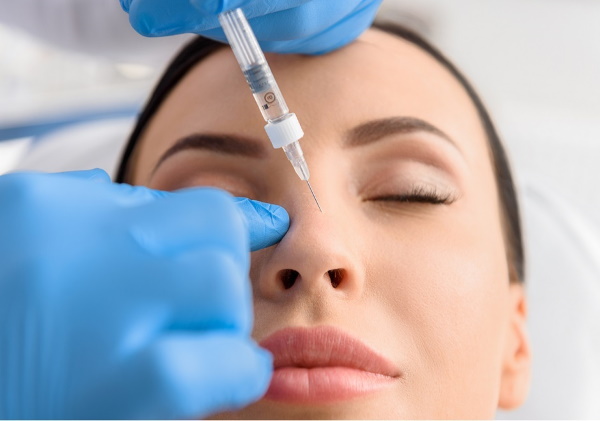
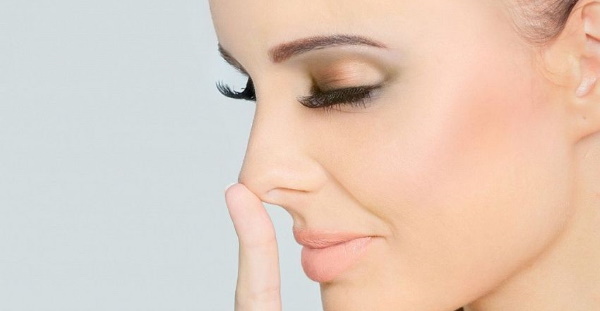
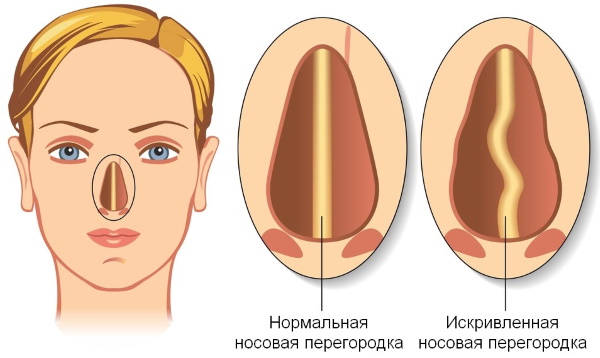
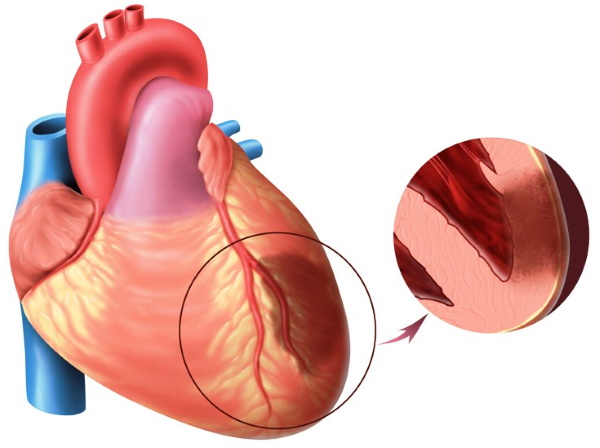
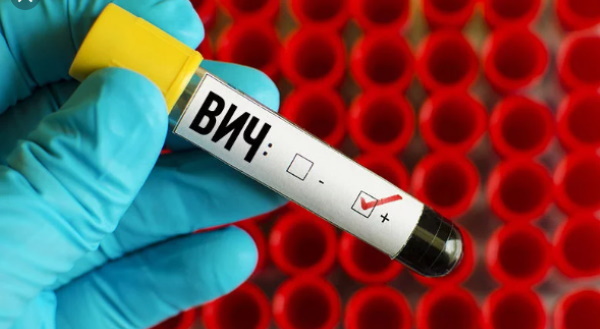
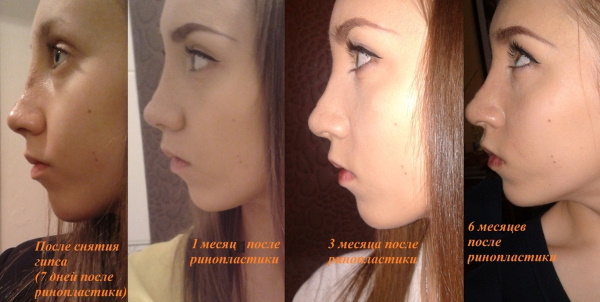
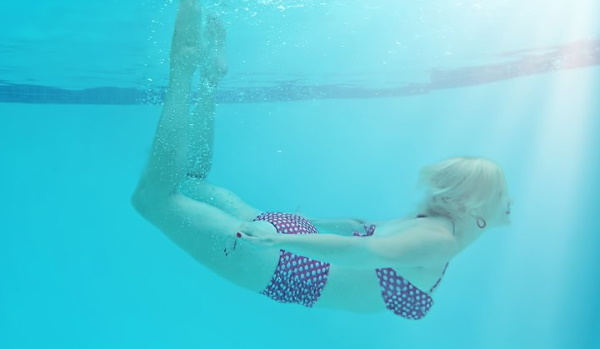

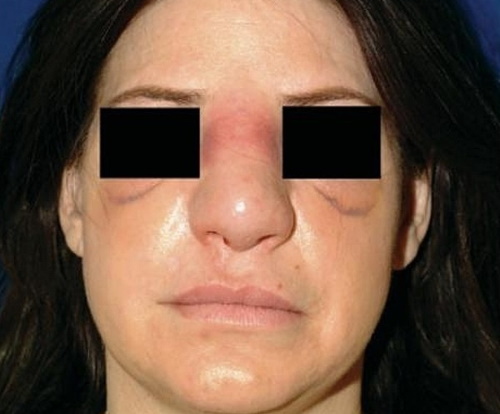
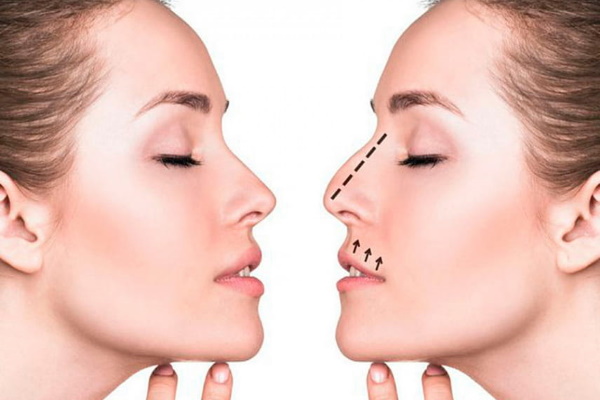

I myself also did rhinoplasty, I did it at Pshonkina Svetlana Yurievna, I had closed rhinoplasty and the result makes me very happy. A week after it, I saw that this is what I wanted. And outwardly, of course, the face immediately changed.